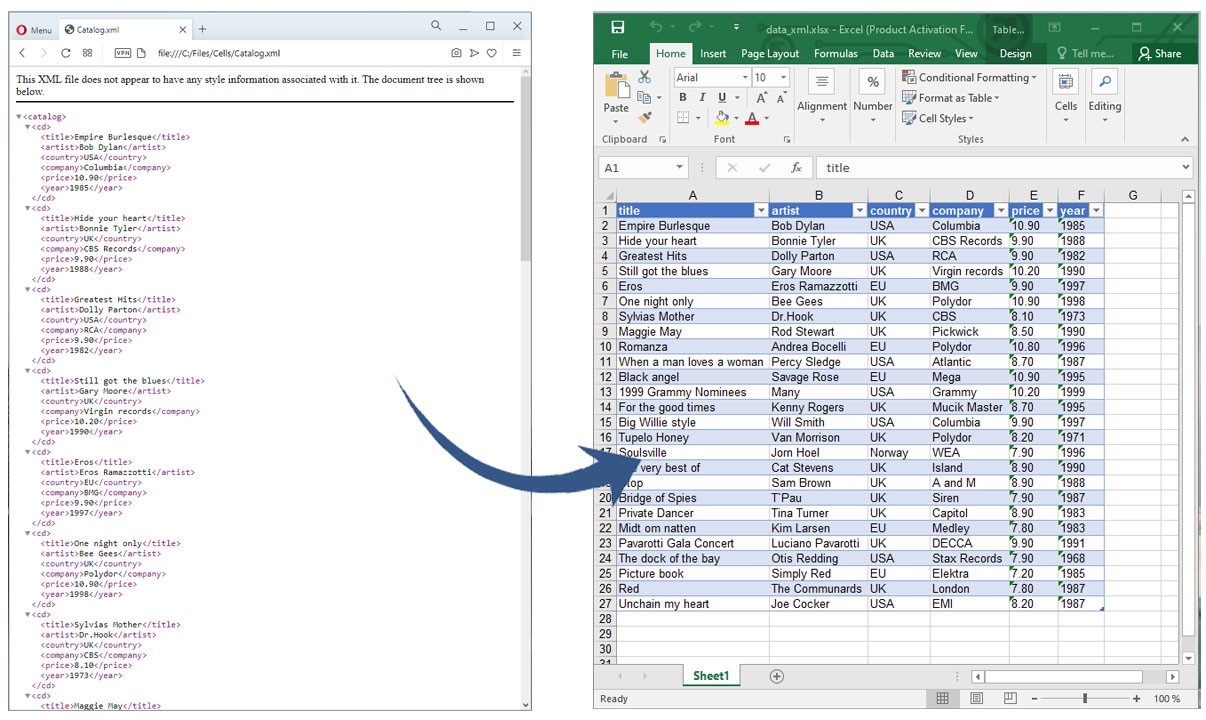
In the world of data processing, interoperability between different file formats is crucial. XML (eXtensible Markup Language) is a widely used format for structuring and storing data, while Excel XLS is a popular spreadsheet format. Converting XML data into Excel XLS files can be incredibly useful for data analysis, reporting, and other business tasks. In this blog post, we will explore how to convert XML data to Excel XLS in Java.
Java XML to Excel Converter API
Aspose.Cells for Java is a feature-rich and flexible library that allows developers to create, modify, and manipulate Excel files in Java applications. It supports a wide range of Excel formats, including XLS, XLSX, CSV, and more. Among its many capabilities, Aspose.Cells for Java can also handle XML-to-Excel conversions seamlessly.
To use the library, you can either download its JAR or install it using the following configurations.
<dependency>
<groupId>com.aspose</groupId>
<artifactId>aspose-cells</artifactId>
<version>23.8</version>
</dependency>
Convert XML to Excel XLS in Java
Below are a few easy steps that you need to follow to convert data from an XML file to Excel XLS.
- Create an instance of the Workbook class.
- Call the Workbook.importXml() method to import XML file.
- Save the Excel Workbook as an XLSX file using the Workbook.save() method.
The following code sample shows how to import XML data to an Excel XLS in Java.

Why XML to Excel Conversion in Java?
Let’s take a moment to understand why you might need to convert XML data to Excel XLS:
Data Transformation: XML is a flexible data format, but it’s not always ideal for data analysis or reporting. Converting XML data to Excel makes it more accessible and allows you to take advantage of Excel’s features for visualization and analysis.
Reporting: Many businesses rely on Excel for creating reports and dashboards. By converting XML data to Excel, you can easily generate professional-looking reports with charts, tables, and formatting.
Data Aggregation: If you have data stored in various XML files, converting them to a single Excel file can make it easier to aggregate and analyze the information.
User-Friendly Output: Excel files are widely used and familiar to most users. Converting XML data to Excel ensures that your data can be easily shared and understood by others.
Get a Free License
You can get a free temporary license to convert XML data to Excel format without evaluation limitations.
Conclusion
Converting XML data to Excel XLS files is a common task in data processing and reporting. Aspose.Cells for Java provides a robust and efficient solution to achieve this conversion seamlessly. In this blog post, we’ve explored how to write code to convert XML data to Excel using Aspose.Cells for Java.
Remember that this is just a basic example and Aspose.Cells for Java offers a wide range of features and customization options to handle complex scenarios. You can explore the official Aspose.Cells documentation for more advanced usage and techniques. In case of any ambiguity, please feel free to contact us on the forum.